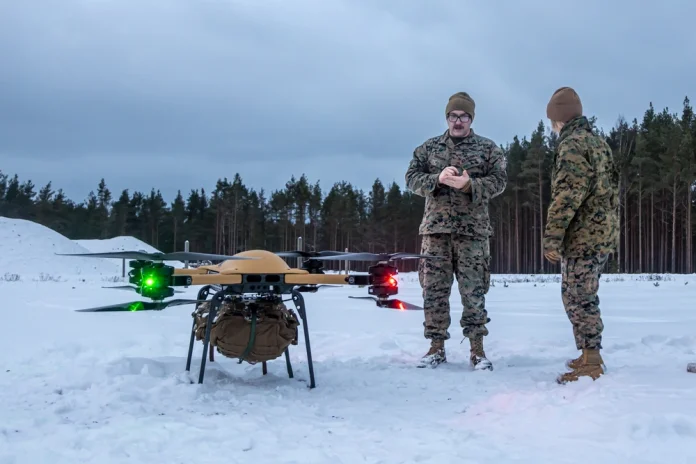The increasing difficulty in resupplying of forward deployed forces on the battlefield has prompted militaries to explore various alternative ways to reliably execute this critical capability.
These efforts have included the investigation of the use of unmanned systems to augment or replace the manned helicopter or tactical ground vehicle which have traditionally performed these roles. The former has particularly been widely employed for the resupply mission due to its ability to rapidly traverse the often-extended distances between logistics centres and widely disbursed combat units.
In addition, helicopter resupply could simply fly over or around ground obstacles like bodies of water, terrain or even intervening enemy positions while delivering directly to the unit in need. As often demonstrated in combat such as Vietnam this could, at times, be a perilous operation. However, the proliferation of both portable air defence systems and the potential of being observed by unmanned surveillance drones and then targeted has become so significant that manned vertical lift resupply has become unacceptably risky. The possibility of employing the unmanned aerial platform to fill this role was a reasonable idea.
The concept of the cargo delivery drone was considered as a tool by commercial warehouse to customer delivery by firms like Federal Express and Amazon. Military resupply, however, necessitated US Marines larger payloads and ability to operate in more demanding environments. The US Marines successfully demonstrated the execution of unmanned aerial cargo transport in Afghanistan using the Kaman K-Max. Far forward resupply, however, demanded smaller platforms able to deliver to unprepared sites. One of these is the developments by Mallory Aeronautics in the United Kingdom. In 2022 its T-600 was employed in evaluations of ship-to-shore and ship-to-ship resupply by the British Royal Navy and Royal Marines. More recently in February 2024 US Marines of the Combat Logistics Battalion -6 employed the Mallory T-150 as a Tactical Resupply Vehicle (TRV-150) during its operations in Norway and Syndalen, Finland. These flight missions considered the ability of the unmanned cargo drone to perform in Arctic conditions. This as the second demonstration of the T=150 by US forces as the US Army 101st Airborne had utilized it during exercise Combined Resolve 24-01 in October 2023 at the Joint Multi-National Readiness Center in Hofenfels Germany. The US Navy has purchased fifteen T-150 drones in mid-2023 from SURVICE Applied Engineering.
The T-150 is a vertical take-of-and-landing unmanned quad-rotor airframe that is electrical motor powered. It employs a removable battery that can be quickly replaced when the charge gets low allowing the air vehicle to immediately return to service. Each rotor is powered by its own electric motor. It has a maximum range of over seventy kilometres and can carry a payload of 68 kg (150 lbs). The T-150 is capable of day and night flight even in adverse weather conditions reaching an airspeed of over thirty meters/second (108 km/hour (67 mph). It can deliver water, medical supplies, equipment, fuel, and ammunition. It can either land with the cargo then off-loaded or remotely drop the load and immediately take-off thus minimizing its time in the landing spot. Piloting is remote through a laptop interface that utilizes waypoint navigation allowing precise autonomous delivery.
The US Marine field experiences with the Mallory (now a BAE Systems Company) TRV-150 further increases the knowledge base in validating the application of unmanned drones in filling the forward resupply mission.
by Stephen W. Miller













